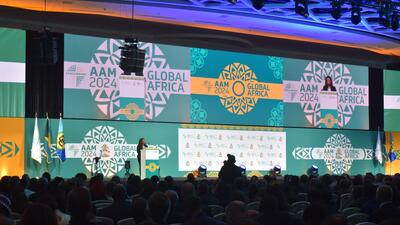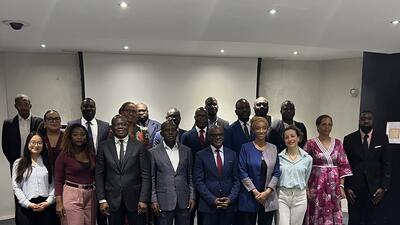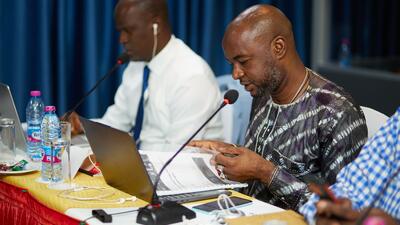The real global capital market
What is the largest capital market on Earth? It is not the New York Stock Exchange, Euronext or even all the stock markets of the world combined. Global debt markets are much bigger than the world’s equity markets of course, but they are not it either.
No, the biggest capital market on Earth is the Earth itself. We have been trading its assets for longer than we have understood the concept of money, but we have still to learn how to value it consistently. Nonetheless, we recognize it is worth much more than the US$ 225 trillion in assets on all of the world’s financial markets combined.
We currently manage our financial assets for growth, but natural capital assets are shrinking. The rate of species extinction is 100 to 1,000 times the normal background rate – a level not seen since the last major extinction event 66 million years ago. Over 40% of people in 2050 will be living in river basins under severe water stress. There are an estimated 400 dead zones in our oceans, where we have depleted the oxygen necessary to support marine life, and we are overfishing roughly 80% of marine fisheries.
The ongoing degradation of critical ecosystems and the resulting loss of the Earth’s biodiversity are compromising this natural capital market. Much more than just an accounting entry, nature provides essential benefits and services – and not just in the resources that we extract and consume, such as minerals, water and air. River beds and marshes filter and clean water; unimaginable numbers of bacteria convert nitrogen from the air into nitrogen that feeds plants, and then bees provide life-giving pollination services so we can grow our food. We degrade these services at our own cost – forcing ourselves to turn to substitutes such as water treatment works and fertilizers.
Where ecosystem degradation reaches global scale there are no substitutes to be found. Indeed, what is now evident is that we are pushing the planet beyond its boundaries. The Planetary Boundaries framework was published in 2009 by a group of 28 internationally renowned scientists, supported by thousands of researchers, and defines nine key areas (such as biodiversity loss, ocean acidification and climate change) where we are pushing towards or past safe limits. Crossing these boundaries could generate abrupt or irreversible environmental changes. Respecting the boundaries reduces the risks of crossing these thresholds, preserving a safe operating space for humanity.
Planetary boundaries also represent barriers for businesses. Can businesses thrive if they no longer have an automatic right to clean water; if services such as the nitrogen and phosphorous cycles cease to perform their cost-free work effectively; if conflicts over agricultural land availability, made scarce by climatic changes connected to our energy mix, rise to strategic geopolitical importance? The closer the planet gets to its boundaries, the less room businesses will have to operate.
The global business community need not be paralysed by issues of this magnitude – yes there are risks but also opportunities. When leaders start to think about the Earth in terms of natural capital, they come to understand the difference the private sector can and must play. Here are some things business leaders can do today:
- Measure impact. Although metrics are not yet standardized, there are numerous tools available to measure, manage and mitigate business impact on natural capital in areas such as emissions, water use, forest product procurement and ecosystems impact, dependence and valuation.
- Revisit reporting. Capital markets rely on disclosures. The recent launch of the consultation draft of the Integrated Reporting Framework is a first step to transforming transparency in corporate reporting, so investment and capital allocation decisions can be made, based not just on financial capital efficiency but on natural and social capital returns as well.
- Work with financial investors. The financial investment and business communities must work together to understand how to measure, monitor, account for and ultimately report on the impacts, risks and opportunities of natural and social capital in business.
- Work with policymakers. Well-functioning capital markets require long-term policy support. Industry must provide insight in the areas of target setting, resource allocation and financing mechanisms so as to encourage policies that protect biodiversity and ecosystems.
- Look to peers for opportunities to scale. Learn from sustainability leaders – collaboration around lessons learned can open up new opportunities.
We are still struggling to recover from the 2008 global financial market crash and its collateral damage. The natural capital market is bigger – and it is crashing, too. We simply cannot afford to let that happen.















